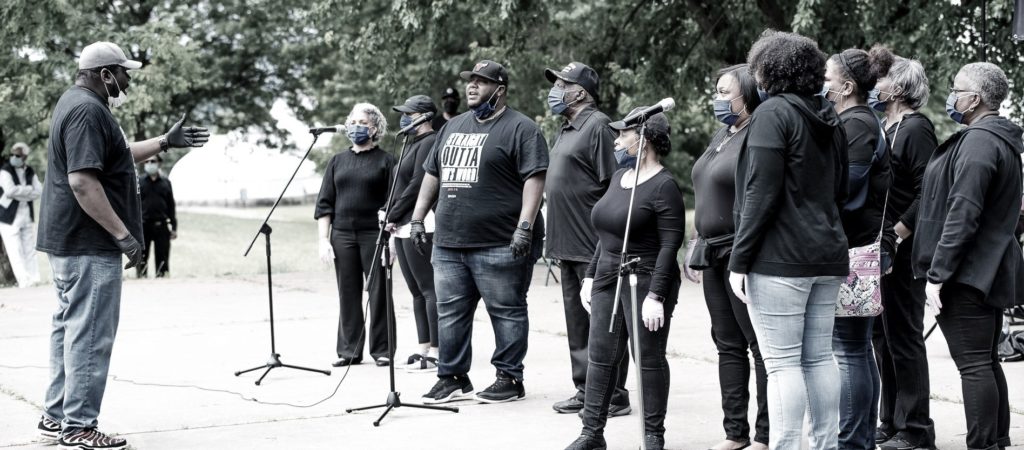Archive for category Oct Jul Apr 2020
Dump the Trump-Pence Ticket
Posted by admin in Oct Jul Apr 2020, Past issues on October 4, 2020
Arun D. Jatkar, Monroeville, PA .
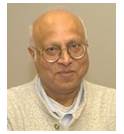
While on WhatsApp with friends in India, I coined a slogan, Dil pukare baram-bar, Modiji ka jay-jay-kar! But when asked if I will ever say, Phir ek bar, Trump Sarkar, my answer was an emphatic No.
Having made a conscious choice to become a US citizen years ago, I feel I ought to vote for someone who will work for the good of America and Americans, not for someone who simply mouths slogans like “Make America Great Again,†and then, in the same breath tells Americans to get rid of the ballot. Everyone knows the serious threat posed by his psychopathic and equivocating “musings†that will derail a smooth transfer of power, if he loses in the presidential elections this fall.
Years ago, I had to rely on Cobra for myself and my wife for eighteen months; and when that ran out, had to go without Cobra for another eighteen more months before becoming eligible for Medicare. So, I know first-hand what it is like to be out in the cold with pre-existing health conditions. So, I just CANNOT vote for a nominee who is obsessed with the thought of abolishing the Affordable Care Act. And now, with social security as my major financial lifeline, I just CANNOT vote for its callous, remorseless disappearance. In addition,
— Do I want to see a government-promoted, nakedly racist policy of disenfranchising the citizens of color? No!
— Do I stand for the insults heaped upon our sons and daughters who put their lives on the line for defending America? No!
— Do I want to go along with the maniacal policy of hoping for herd immunity in the midst of the current pandemic? Hell, No!
— Do I want to vote for a man who stands safely away from unmasked crowds and tells them that the fear of Covid-19 is a hoax? No!
— Will I vote for a man who values Putin’s words more than the findings of our own intelligence agencies on matters of national security? No!
— Do I want to vote for a man who wantonly denies climate change and says, “Science does not knowâ€? No!
— Do I want to vote for a man who is hellbent upon permanently silencing the voices of pro-choice women? No!
— Do I want to vote for a man who is determined to deny the LGBTQ community the right to live like other human beings? No!
So, I’ve made up my mind: Dump the Trump-Pence Ticket! END$$
Home:
Diwali at the Children’s Museum Last Year
Posted by admin in Oct Jul Apr 2020, Past issues on October 4, 2020
By Juginder Luthra, Weirton, WV
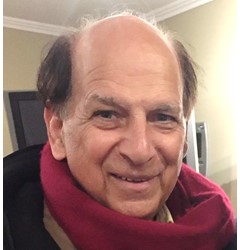
The tapestry of Pittsburgh is changing. More and more threads of Indian Americans — like our customs, foods and festivals — are getting woven into the Pittsburgh community. In this, we have come a long way from a time about forty years ago, when a well-educated resident of Pittsburgh asked us, “Do they have festivals in India?†We told him about the numerous festivals and the meaning behind each one. Only one person became educated with our answer.
A community leader among us, Mrs. Krishna Sharma, last year made one more institution become more familiar with India to a higher level. Sometime back, she had acquired an old church in Carnegie, converting it into the India Community Center, now known as ICC. Last October, she collaborated the Diwali activities at the ICC with the Children’s Museum of Pittsburgh. On October 19, 2019 India’s auspicious Diwali was celebrated, for the first time, at the Children Museum.
The flyer made by the Museum to promote the event included the following lines: This event was made possible by the India Community Center. Special thanks to our event chair Krishna Sharma.
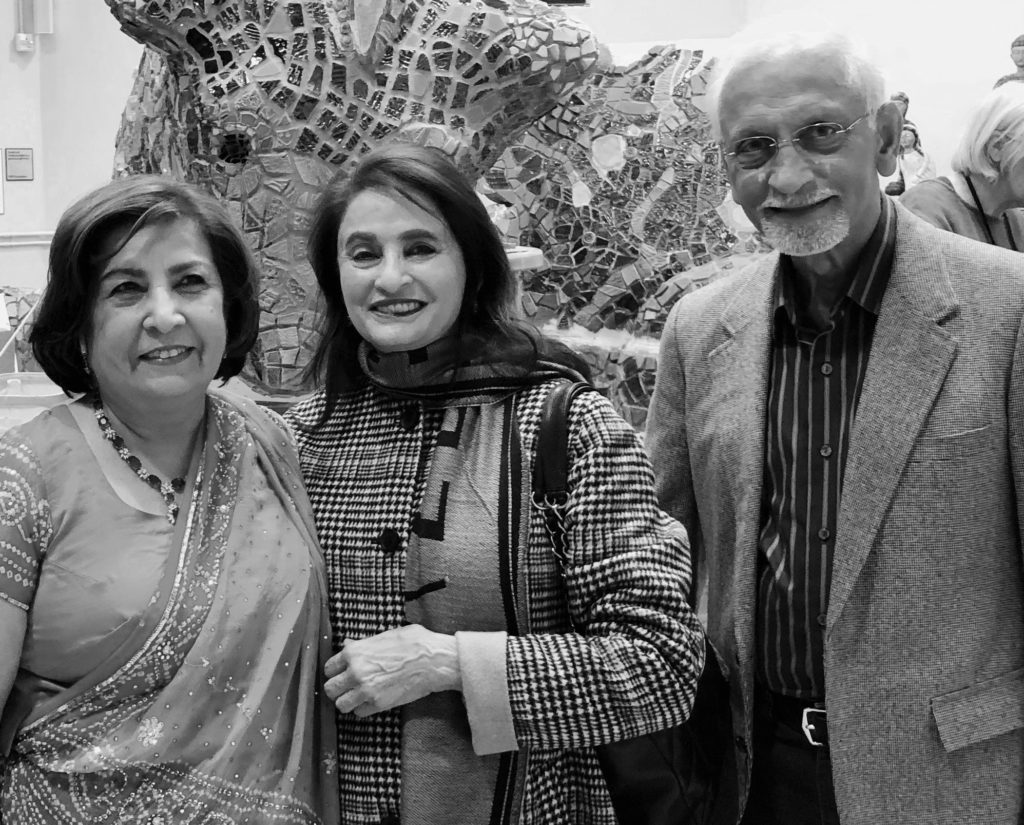
In spite of serious family issues, Krishna gave her time and efforts for the celebration of Diwali at the Children’s Museum. The event was set on three floors of the Museum Lab. For a token ticket of $5, hundreds of children and adults, a mix of mainstream Americans and Indian Americans, enjoyed Indian snacks provided by Cafe Delhi. A large traditional rangoli designed and colored by Krishna Sharma and colored by Krishna greeted visitors at the entrance.
Children colored diyas (clay lamps), learned the rangoli art, and had henna painted on their hands. Sheena Chopra of Weirton, a well-known singer, now living in Pittsburgh, rendered the National Anthems. Against a backdrop of Indian saris decorating the stage, students of Guiding Stars Production performed traditional Indian dances. Their teacher, Sonia, choreographed the dances for the event. END$$
Home:
Air Travel During the Pandemic
Posted by admin in Oct Jul Apr 2020, Past issues on October 4, 2020
By Manjeri Raman, Savannah, GA
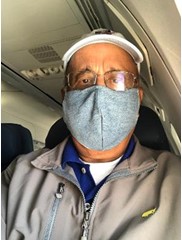
My wife Krishna and I traveled to Seattle in mid-July after postponing our tickets twice — in early March and then in June — thinking that the Covid-19 situation would improve. Surprisingly, Delta did not charge us a change fee. The pandemic showed no sign of abating. We took our chances and traveled, since we needed to go to see our son there.
0ur check-in experience at the empty Savannah airport was smooth, with everyone wearing masks and gloves. Savannah being a small airport, the TSA agents were friendly and considerate about allowing food in the hand baggage. The waiting area at the gates was set up for social distancing with alternate seats clearly marked. Boarding was strictly by row numbers, with time allowed for social distancing. Our flights first to Atlanta and then to Seattle were about a little over half full.

As we entered the plane, flight attendants greeted us with a Ziploc bag with two small snack bags, bottled water and a sanitizing wipe. They offered masks if you needed them. Everyone was expected to wear the mask during the entire flight except when eating. All the passengers complied. The seats and the seat-back trays were clean and you could use the wipes to clean them further!
Atlanta airport, one of the busiest in the world, with seven con-courses, was a ghost town with just a handful of passengers walking around. It was quite an eerie experience! Very few business travelers. Most like us, were traveling out of necessity.
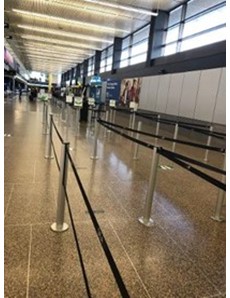
Our layover in Atlanta was about an hour. In the long flight to Seattle, flight attendants cleaned the bathrooms frequently. No cart service of any kind – only bottled water was served – and if you ordered drinks, they brought it to your seat. They did not want to handle either cash or credit cards. Everyone brought food and the trash was picked up frequently.
When we landed in Seattle, another busy airport, ours was the only plane to land at that time, and within minutes we picked up our baggage and met our son outside! Again, this was quite different from our usual trips to Seattle.
We had to cut short our trip by a week, and when I called Delta, they were accommodative and again changed my flights without any fee. I was surprised to get a small refund, as the base fare for the date was lower than what we had paid.
The return flights to Atlanta and Savannah were a replay of the outbound flights. This time we had over a two-hour layover in Atlanta. The food court was partially open, and we had our dinner with mask and social distancing guidelines.
Overall, Delta did a great job under difficult circumstances. I was surprised however that not a single question was asked about Covid-related symptoms nor were our temperatures checked. I thought since we were traveling from the state of Georgia, ruled by an irresponsible governor, there would be some checks or questions. I also expected to fill out our destination address for contact tracing. None of that happened!
We were traveling as before, with no restrictions or questions. This is quite different from India and other countries, where serious efforts are underway to make sure that the Covid virus does not spread due to unrestricted or unchecked travel. END$$
Home:
Our June 2020 BLM Rally at Flagstaff Hill
Posted by admin in Oct Jul Apr 2020, Past issues on October 4, 2020
By Pallavi Muluk, Pittsburgh, PA
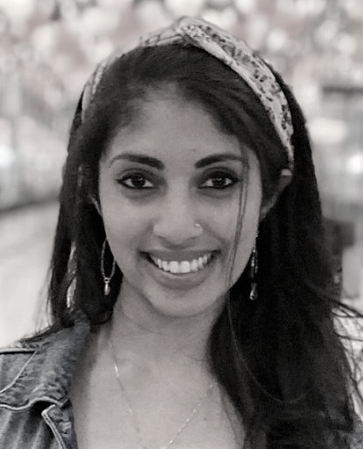
Editor’s Note: Pallavi Muluk is a senior at the University of Pittsburgh and will be matriculating to University of Pittsburgh Medical School after she graduates in April 2021. She is extremely passionate about social justice matters impacting minorities in our country and helped to establish the youth organization South Asians for Change this summer to confront these issues.
Most of us are well aware of racism toward Black people in America. However, too often we performatively mourn the injustices, become overwhelmed by the enormity of the problem, conclude that the issue does not directly affect us, and move on. After all, we’re not hurting anyone, right?
Actually, I would argue that maintaining our decades-long silence does more to perpetuate racist ideologies than blatant acts of prejudice.
On Saturday, June 13th, over 300 members of the Pittsburgh community came together at Flagstaff Hill to celebrate the Black voices in our neighborhoods. Organized by South Asian youth and adults from South Asians for Change (https://www.saforchange.com/) and Pittsburgh Indian Community and Friends, the gathering highlighted the pervasive racism in our society and finally showed our allyship to the cause.
We often forget that if not for Black leaders like Martin Luther King Jr., Rosa Parks, and Malcom X, the Immigration Act of 1965 would never have been passed and we wouldn’t have stepped foot into this country. So how can we now turn a blind eye to the trauma of the Black community? Why do we perpetuate the “model minority myth†and allow the Blacks to suffer the consequences? By now we must know that ignorance is not bliss. When Black people cannot go jogging, hold a bag of skittles, sleep peacefully after a long day saving lives, eat ice cream, or even stand in their own backyards, there is no place for our inaction and silence.\
On June 13th, we listened to a passionate call to action from the Rev. Dr. Darryl Canady; the experiences of Shirley Douglas; and much needed advice on where to start from Lance Hyde and Nicholas Anglin. The beautiful music of the Rodman Street Baptist Church Choir reminded us of everything, art and otherwise, on how the Black community has enriched our life here
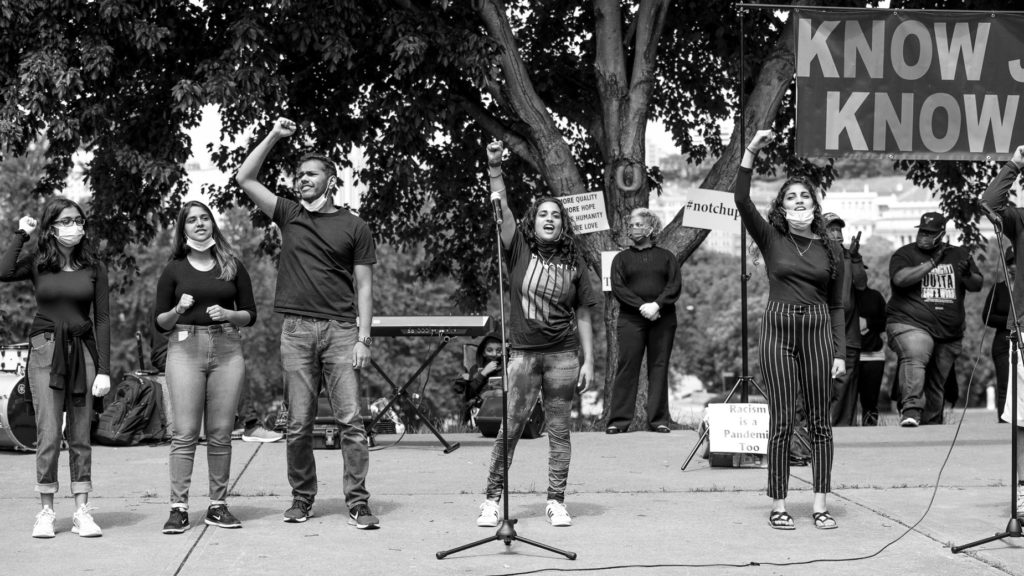
When we chanted the names of George Floyd, Ahmaud Arbery, Breonna Taylor, and Traeyvon Martin, we reminded ourselves why this fight is necessary. Most of all, we learned how much more needs to be done.
While we as South Asians strive to understand the realities of systemic racism, we must accept that being a minority in America does not make us immune to being racist and prejudiced. It is undoubtedly an uncomfortable topic, but instead of saying, “There’s nothing I can do,†sit in that discomfort and ask, “What can I do?â€
Minimally, exercise your constitutional right to vote this November to elect a leader who has a semblance of compassion and who does not bring out the very worst in our country. Take five minutes today to learn something new about the reality of Black people, and tomorrow take ten minutes to figure out what you’re going to do about it. And the following day get started.
Books to read:
White Fragility by Robin DiAngelo
How to be an Anti-Racist by Ibram X. Kendi
Between the World and Me by Ta-Nehisi Coates
Links:
Systemic Racism Explained (act.tv)
How to Be an Ally if You Are a Person with Privilege (Frances E.
Kendall, Ph.D. © 2003)
Editor: The graphics are from South Asians for Change. END$$
Home:
The Indian Community Responds to the Food Crisis for Needy Families in the Pandemic
Posted by admin in Oct Jul Apr 2020, Past issues on October 4, 2020
By Suresh Ramanathan, a PICAF Volunteer
Long car lines this spring that stretched over a mile outside the Greater Pittsburgh Community Food Bank (Food Bank) with wait times of up to five hours brought national attention to our region. The increasing unemployment in Pennsylvania combined with numerous business closures and the socially crippling coronavirus brought about a perfect storm that debilitated families that had not previously experienced food insecurity. It was worse for other families that were already suffering and did not have any transportation to get to these distribution centers!
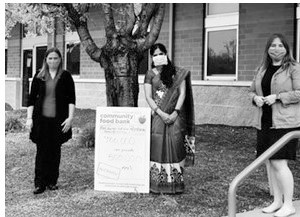
The Pittsburgh Indian Community and Friends (PICAF) had an existing partnership with the Food Bank as we had worked with them to improve a breakfast menu for school children so that they were nutritionally charged and ready to learn!
Even before PICAF reached out to the Food Bank, individual donors from the Indian Community had already donated to the food bank. However, each of you reading this should feel good that Indian families in our region stepped up and helped Pittsburgh Indian Community and Friends (PICAF) raise over $100,000 in a matter of weeks!
As with all our partners, 100% of all that we raised goes to the nonprofits. The Food Bank worked with us to make sure 100% of what we gave them went to the program and not to overhead. Further a dollar-to-dollar match from 84 Lumber and Nemacolin Woodlands allowed us to double the amount and thereby double the number of meals delivered to needy families!
On Thursday, April 23rd, 2020 the Indian Community had a combined check presentation at the Greater Pittsburgh Community Food Bank with $5,000 from Hindu Jain Temple, $25,000 from the S.V. Temple and $100,000 from Pittsburgh Indian Community and Friends (that includes a significant contribution from Chinmaya Mission and S.V. Temple). Dr. Visala Muluk represented Chinmaya Mission and the Pittsburgh Indian Community and Friends, Dr. Linganna, Secretary of S.V. Temple and Jayesh Selokar of Hindu Jain Temple.
The combined total was $130,000 that would have resulted in 750,000 meals; but with the match we were able to deliver 1.5 million meals!
This year PIC5K has gone virtual. We are turning our attention to eradicating racial inequities in education! One of the projects we are investing in helps families with young children deal with cyber classes conducted by the Pittsburgh Public Schools. The OASIS project has established a neighborhood pod school that buses children to the pod and feeds and mentors them as they attend online classes from 9:00 am to 3:00 pm. PIC5K is raising funds this year to support an after-school program for these children focused on robotics and coding. Please visit www.pic5k.org and helps us facilitate children learning while their parents have time to earn. END$$
Home:
Obituary: Maxine Bruhns (1924 to July 2020)
Posted by admin in Oct Jul Apr 2020, Past issues on October 4, 2020
By Chandrika Rajagopal, College Station, TX
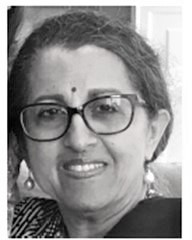
Editor’s Note: Chandrika Rajagopal lived in the Pittsburgh Metro area during the 1980s and 90s, and was part of the efforts to smooth out the teething troubles of the Indian American community in those challenging formative years. She was the founding chairperson of the Indian Nationality Room Committee from 1991-2000. She moved to Texas, in 1998.
Meeting Maxine Bruhns was an unforgettable experience. In May 1991, we met near a painting at Chancellor Wesley Posvar’s residence on the Pitt campus. An elegantly dressed lady shared with me details about the artist while I was admiring the painting’s wintry scene. She was Maxine Bruhns.
After our introductions, the first question that flew out of my mouth was, “Why is there no Indian Nationality Room?†Maxine explained that these unique rooms are built by the local immigrant communities, who raised funds to build their rooms to honor their ancestries and countries of origin. She promptly invited me to head up a committee.
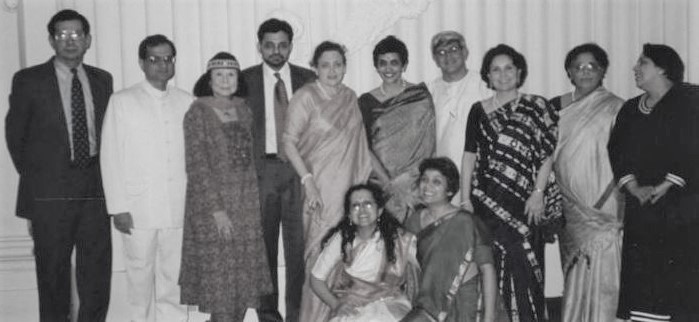
That is how the Indian Nationality Room’s destiny was set in motion. While forming our committee, Maxine was a great source of inspiration as she motivated us by sharing stories about how the other nationality rooms grew and developed. I was struck by her interests in various cultures, her indefatigable energy and her single-minded devotion to the Nationality Rooms program. The spirit of Ruth Crawford Mitchell was alive and well in Maxine!
From the beginning, the aim of our committee — at the time, consisting of Anu Reddy, Deepak Wadhwani, Saroj Bahl and myself — was to highlight India’s incredible unity and diversity. We showcased India’s cultures through art, dance, and music by hosting fundraising programs. Maxine attended all of them, dressed in strikingly colorful and culturally appropriate attire.
From beginning to end, she inspired us so much that we became the first Nationality Room committee to raise funds, design, build, and dedicate our room in under 8 years! While the kudos for this feat go to the generosity of our beloved Indian community, Maxine was the fairy godmother who shepherded us through the various steps over the years.
The culmination was the dedication in January 2000. When I suggested a typical Indian way of inaugurating anything new with ceremonial blessings, Maxine watched delightedly as the stunning room, designed by Deepak Wadhwani, was blessed by religious representatives from India’s religions: Hinduism, Jainism, Buddhism, Judaism, Christianity, Islam, Sikhism, and Zoroastrianism.
The official dedication at Heinz Chapel followed by a delicious dinner in the evening were memorable occasions graced by Chancellor Mark Nordenberg and Naresh Chandra, India’s Ambassador to the U.S.
What else can I say about the indomitable Maxine? I learned much: her dedication, devotion, love of and for life, her wealth of experience and her insatiable curiosity about new and different things. My move to Texas kept us in touch for over two decades as she updated me on the new rooms, scholarship programs, and personal matters. I never stopped admiring this West Virginia-born-and-raised gal who left her mark on Pittsburgh and, through the Nationality Rooms Program, the world.
Who could have ever imagined that a chance encounter over a painting would lead to the construction of a Nationality Room and a relationship that endured for decades?! Maxine passed away on July 17, 2020 in Pittsburgh. She was 96. Rest in peace, dear Maxi! END$$
Home:
Black Lives DO Matter — Do the Browns Care?
Posted by admin in Oct Jul Apr 2020, Past issues on October 4, 2020
By Deepak Kotwal, Pittsburgh, PA.

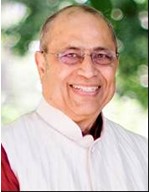
This is a common Hindi proverb meaning “The washerman’s dog neither belongs to the home nor the river-shore.†Even after living in the US for decades, many Indian immigrants and naturalized citizens feel they are “Indians†living here and “Americans†while visiting India.
The police killing of George Floyd, a Black man, in broad daylight by use of excess force in Minneapolis in May triggered Black Lives Matter (BLM) protests nationwide. Many whites joined, recognizing the systemic racism against African Americans. In this, where do the BROWNS — the immigrants from India — stand? Are we like the proverbial Washerman’s Dog? Since we are neither white nor black, do we feel it is not necessary to get involved? The BROWN youngsters here did not think so. For details, see Pallavi Muluk’s article on the BLM rally held in Oakland.
Indian Americans have done extremely well in the US due to their in-demand, marketable cerebral skills. Among the recent immigrant groups by country, Indian Americans have high incomes and net worth, primarily because of the skewed immigration policies of the US of letting in only people with cerebral skills. Claims that our success is due to our merit, hard work and American meritocracy are only partially true. We are the beneficiaries of two broad historical developments: a large economy and the Civil Rights struggle. We generally don’t recognize how we are benefitting from the latter.
Early English and other European arrivals to North America simply grabbed the land from the Native Americans, leading to genocide and driving the Native Americans into reservations. Slavery provided free labor of kidnapped and enslaved Africans. The concept of White Supremacy (AKA manifest destiny) was the essential intellectual underpinning.
Civil rights struggles followed. Even after the Civil War (1861-1865) ended with the Confederate States’ defeat and the abolition of slavery, Blacks were kept subjugated through Jim Crow laws, intimidation, and lynching. The Civil Rights Movement, led by Martin Luther King Jr, finally led to the 1964 Civil Rights Act. All later immigrants from India are the beneficiaries of the hard-won Civil Rights Act on housing, schooling, and employment.
One would think that the US would have welcomed immigrants in the expanding labor-short economy of the 19th and early 20th centuries. But the American attitude towards immigration was not only racist, but also anti-Catholic and anti-Jewish. It favored the Protestant White immigrants from Nordic countries. Various laws, such as the Chinese Exclusion Act, excluded Asian immigration. Naturally, in early 20th century, the number of Indians in the US was negligible. The few, mostly Sikhs from Punjab, working as laborers, faced racist attacks. An example is the 1907 Bellingham riots in Washington state to kick out Indians.
The game changer for Indians was the 1965 Immigration Act. It did away with the country-based quotas and preference for European immigrants. This act preferred immigrants with skills required for the US economy. The US was anxious to catch up technologically with the USSR after it launched Sputnik in 1957. The change was perfect for English-educated, highly skilled Indians when the Indian economy was not large enough to fully absorb them. Hence the in-flux of Indian graduate students in S&T, and doctors as residents in US hospitals after 1965.
The Civil Rights Movement and the enormously consequential 1964 Civil Rights Act made it easy for the later Asian immigrants. It integrated schools and housing, workplaces, labor unions, established the Equal Employment Opportunity Commission with its potential for lawsuits and did away with the overt Jim Crow segregation in the South.
Thus, we are the direct beneficiaries of the hard-won social changes brought about by the descendants of enslaved Blacks, without even being aware of it. So, we do need to support the continuing march by Blacks towards the eradication of racism. A few questions of self-examination are warranted here.
— What is our attitude towards African Americans? Are we unconsciously internalizing the White attitudes, thinking we are accepted here as “honorary†Whites?
— Do you know any African Americans you would call a friend?
— Do you sympathize with “colorism†in the Indian matrimonial ads? The ones where “wheatish†complexion is preferred.
— How would you feel if your son or daughter were dating/marrying an African American?
— If there is a BLM protest planned in your area, would you show up with your kids?
We owe this self-examination to ourselves, and also as a tribute to the activists who risk life and limb for progress that directly benefits us. Barrack Obama was the very first Black president — elected and then re-elected. Just remember: the choice of Kamala Harris as the VP candidate for the Democratic Party would have been impossible without the political struggle waged by the Native Blacks’ Civil Rights movement.
It is time for us to follow the lead of our youngsters:
For details, see Pallavi Muluk’s article on the BLM rally held in Oakland.
END$$
Home:
The Pittsburgh Patrika’s 25-year Trajectory
Posted by admin in Oct Jul Apr 2020, Past issues on October 4, 2020
By Kollengode S. and Premlata Venkataraman
Assessing the articles in The Patrika against the goal it set for itself (as detailed in this lead article), one can say, the magazine has met its objectives. You can access the other articles at www.pittsburghpatrika.com.
Unlike New York/NJ, DC/MD/Northern VA, and the Bay Area where hundreds of thousands of Indians live, barely 18,000 Indians live in the Pittsburgh Metro region (Southwestern Pennsylvania, the West Virginia Panhandle and Eastern Ohio). And yet, we have people among us contributing articles for the magazine. These writers take time from their busy careers as engineers, financial planners, teachers, physicians, dancers, musicians, and Hindu priests to express themselves. They have written poems, personal experiences, cynical observations on the desi lifestyles and contemporary issues, reviews of events in Indian performing and visual arts, humorous pieces, and many others.
These writers trust the integrity of the magazine, even when they do not always agree with the tone and contents of some of the articles. A big Thank You to these writers.
The magazine deliberately stayed away from the glossy filmi gossips, even though we received suggestions from well-meaning readers that these items would make the magazine more lively. Yet, the magazine has survived for these twenty-five years with your support.
Personally, publishing this magazine was both an outward journey, and an inward journey as well for us as we worked in our spare time seeking advertisers, interacting with writers in developing stories, and reviewing and finalizing manuscripts. Our interactions with people strengthened our cultural and spiritual moorings as liberal Hindus, as Indians, and now as American citizens.
Our ideas about our faith was reinforced when we went to the original texts and read on their several interpretations, which we shared with readers in many articles. It helped us to go back to India’s literary/spiritual traditions over three millennia in Sanskrit, Hindi, Kannada, Punjabi, and Tamil languages and place their refreshing relevance to our contemporary life — here and now — in these United States.
Laying out the magazine integrating stories with graphics and with advertisers’ artworks has been a challenge requiring great attention to details. All through these years, the magazine has been able to satisfy advertises and writers, while producing a reasonably well-edited and well-laid out product, four times a year for the past 25 years. END$$
Home:
The Business End of the Magazine
Posted by admin in Oct Jul Apr 2020, Past issues on October 4, 2020
By Kollengode S. and Prema Venkataraman
Printing and mailing the magazine for free was possible because of two reasons: First, we had full-time jobs that gave us a professional middle-class lifestyle. With this, we could divert the bulk of our spare time to the magazine. When people ask us how we do this with our full-time jobs, we have often replied them with a different question, “More than ‘How do we do it?’ we have been wondering ‘Why do we do this?’â€
Honestly, when we asked the same question ourselves, particularly while in the middle of a cash crunch to pay the bills, we never got an answer that made any economic sense. But then, as Christ says in the New Testament, “Man does not live by bread alone.â€
The second reason is more important. To retain our editorial independence, The Patrika deliberately has not sought financial or other kinds of support from any social, cultural, political, religious, corporate, or government entities. However, in the Free Market World, any business activity has a reason to exist only if it can stand on its own legs to pay all the bills. The Patrika owes a very big Thank You to all our advertisers — many of them repeat advertisers from Mainstream America and a few Indian businesses here as well. Our advertisers are the only reason the magazine has survived for twenty-five years. We acknowledge their support and trust in our integrity.
Without subscriptions, advertisements were the only source for us to meet the expenses — around $5,000 to $6,000 for each issue. These include the bare-bone expenses for a) printing and mailing the magazine; b) software updates essential for the magazine layout, address correction, and bulk mailing; and c) office supplies and incidentals and travel.
We also spend lots of time working with writers revising and finalizing stories, copyediting & proofreading the articles; and then on the layout of each issue sequencing the articles and advertisements.
As the lead article details, the Coronavirus stunned the finances for the magazine with advertisements vanishing in one stroke.
Thousands of businesses have shut down with tens of millions losing their jobs, and investors losing trillions of dollars. The hospitality and education industries — our mainstay among advertisers — were the worst hit.
It will take a long time for “normalcy†to return even after the pandemic is brought under control. Our life and lifestyle and work environments have already changed. And for sure, the new “normal,†when it returns, will be quite different from the one we left behind. The way we live and work; our ideas of what we mean by “success and wealth,†society, neighborhood, leisure and entertainment, travel and vacation, all will be quite different, hopefully for the better.
So, that is why an honest financial reckoning for the magazine became necessary. And that is why The Patrika seeks voluntary contributions of $20 or more from readers. We hope this is a temporary measure. Please remember, we have been mailing this magazine for free for 25 years, or 100 issues! If and when the economy recovers, we will definitely revisit this situation. Please note that your contribution is NOT tax-deductible since the magazine is not a tax-exempt enterprise.
You can make your volunteer subscription at this Gofundme site.
Or you can mail your check payable to:
The Pittsburgh Patrika, Inc. 4006 Holiday Park Dr., Murrysville, PA 15668.
END
Home:
An Appeal for Voluntary Subscription — The Day of Reckoning for The Pittsburgh Patrika
Posted by admin in Oct Jul Apr 2020, Past issues on October 4, 2020
By Kollengode S. Venkataraman, Editor and Publisher
The Coronavirus pandemic turned the lives of over six billion people upside down worldwide, devastating every segment. Even giant US businesses using the now-familiar “Too Big to Fail†argument, sought — and got — taxpayer-funded bailouts. There is a saying in Tamil,

Translation: “In the tornado, the kitchen grinding stone itself is flying in the air. What can peepul leaves do?†The Patrika is a peepul leaf sucked into the Coronavirus tornado.
“Day of Reckoning†is the phrase in the Bible referring to the Last Judgement. We use the phrase here not in the biblical sense, but in the literal sense, with “reckoning†to mean counting, as in “accounting.â€
You have been receiving the magazine for free for twenty-five years since 1995. In the midst of the Covid-19 pandemic, this is no longer possible. The pandemic wiped out the advertisements that paid for printing and mailing 1900 copies of the magazine for free every three months to readers around Pittsburgh. So, The Patrika is seeking voluntary subscriptions to continue to inform readers about what is going on in our midst.
When The Patrika started its journey twenty-five years ago, the lead article “Why This Newsletter?” began thus:
“The Pittsburgh Patrika is an experimental newsletter to reach people who trace their heritage to the Indian subcontinent, or who are curious about the people from there. This newsletter is a forum for airing and sharing your views, ideas, and even frustrations, on any topic. People from the Indian subcontinent have a diverse background, and yet, are so very alike. When we look through our patina of sophistication, we see that our pleasures and pains, problems, hopes, and even griefs, are similar…
“We have opinions on war, peace, societal issues… … raising children in these ‘modern’ times, dealing with ‘old-fashioned’ parents, intercaste, interracial, interfaith, [and no-faith] marriages, divorce, reproductive rights, religion, religiosity and spirituality, ecology, taxes, tax evasions and tax shelters, NRIs… … This is a forum for expressing and critiquing ourselves. It will last only so long as it serves these stated purposes.â€
Against these objectives, The Patrika is satisfied with what it delivered in the last twenty-five years. The Patrika’s credibility is its editorial integrity and independence. To ensure this, the magazine never sought financial or other support from any social, political, cultural, religious or corporate entities.
This unique magazine for the Greater Pittsburgh Indian Community goes to the offices of local, state and federal elected officials, local libraries, and media outlets, providing them a credible window on how we are melding into the American mainstream. Because of this, we have become a one-of-a-kind source of information as we receive inquiries from the mainstream, seeking resources from within our community.
Our writers pen articles about our people who render yeomen service in different fields and their talents. Also, knowledgeable members among us regularly review music and dance recitals and other events.
Thus there is a compelling need to continue to highlight in an editorially independent magazine the accomplishments of our community members in their professions and extra-professional activities. Such records gives credibility to these stories and can inspire our youngsters about opportunities, possibilities — and needs — in their adult life.
Our very first issue came out with no ads. Savor the irony here: after twenty-five years, we are almost back to square-one, only two ads in this issue.
So, The Patrika seeks voluntary subscriptions from readers to continue to inform readers about what is going on in our midst. Contributions of $20 or more from readers are welcome with gratitude. Please remember, we have been mailing this magazine for free for 25 years, or 100 issues! We hope this is a temporary measure. If and when the economy recovers, we will definitely revisit this situation.
You can donate online at the GoFundme here:
Or mail your check payable to:
The Pittsburgh Patrika, Inc. 4006 Holiday Park Dr. Murrysville, PA 15668
We will update you on the total amount we receive from readers in response to this appeal. Please note that your subscription is NOT tax-deductible since The Patrika is NOT a tax-exempt enterprise. End.

